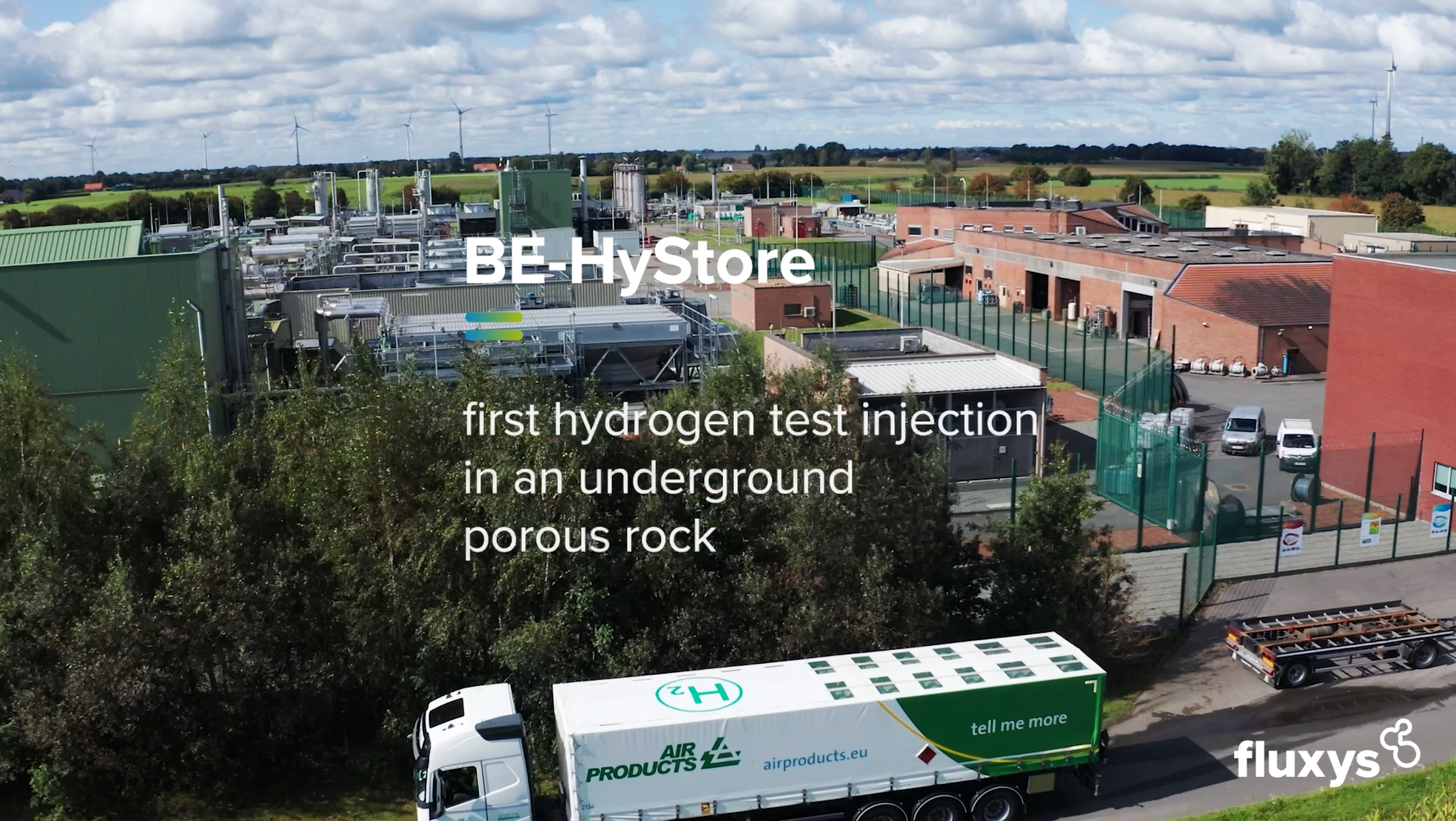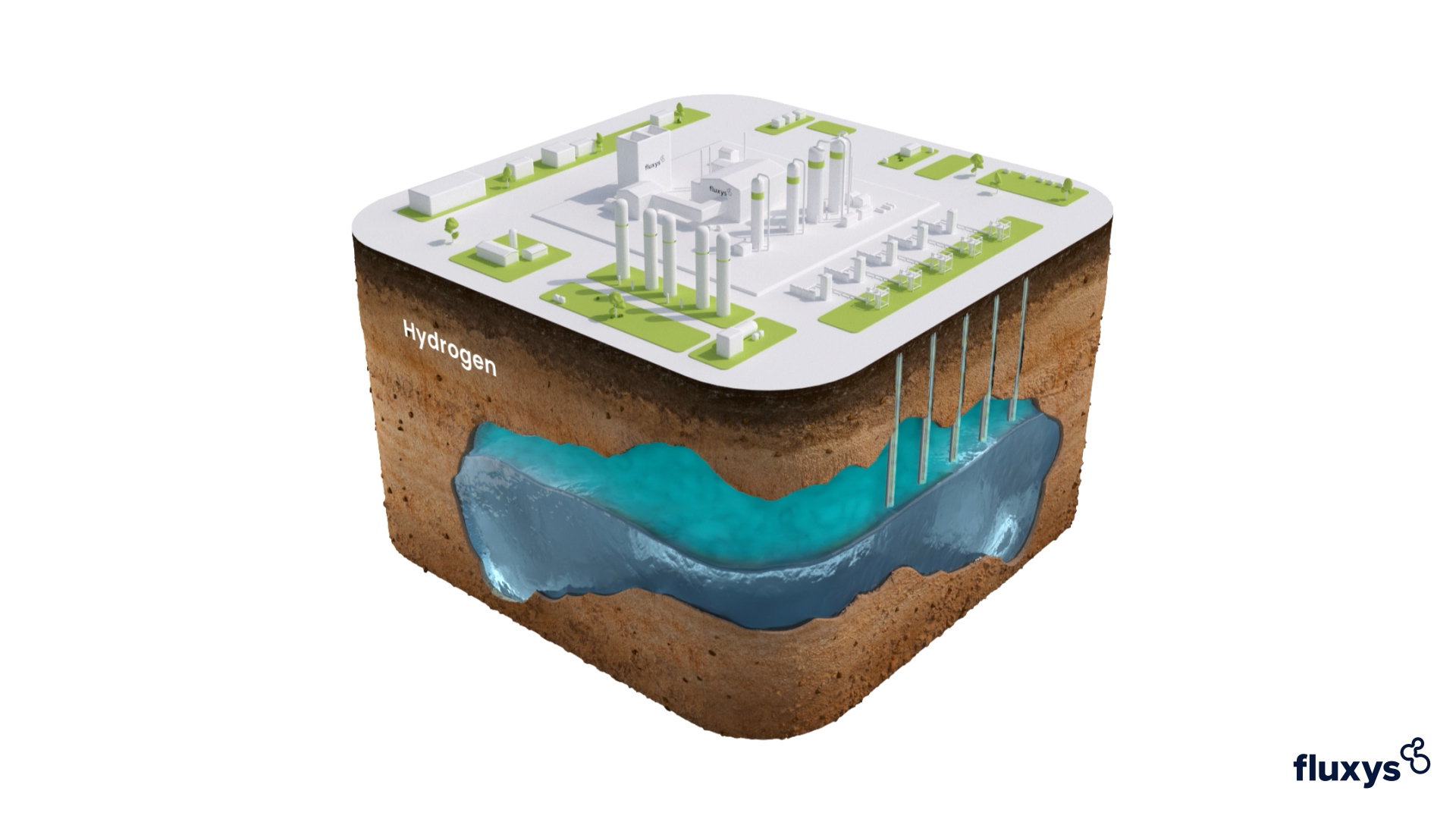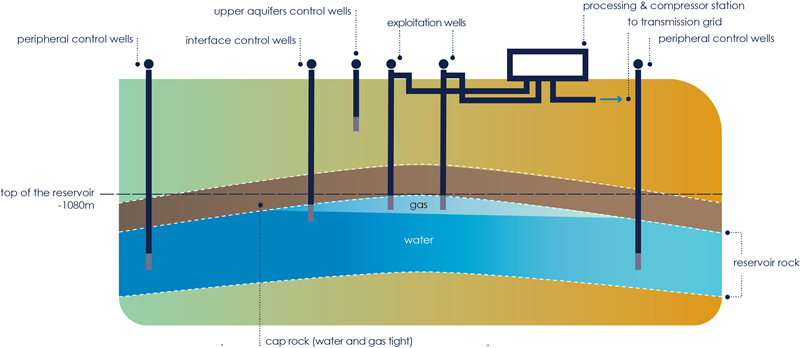A testing ground for the energy transition
Loenhout is a unique Fluxys facility, in the province of Antwerp, Belgium, where we operate an underground natural gas storage plant which serves as a giant buffer for the energy system.
The storage capacity in Loenhout could also be a crucial building block for the future energy system and the pilot project BE-HyStore is the first step in achieving safe and clean storage of hydrogen in the underground porous rock.
The prospect of storing hydrogen is a significant step in realising the energy transition. Fluxys is collaborating with UGent and with the support of the federal Energy Transition Fund (ETF) to explore the possibility of storing hydrogen in the deep underground of Loenhout.
Large-scale hydrogen underground storage in Belgium can support energy security and strengthens the future energy system with a buffer and flexibility to meet peak demands.
Hydrogen at Loenhout in a nutshell
Unique opportunity to significantly increase Belgium’s renewable energy storage capacity
Today, the facility at Loenhout supports our security of supply buffer and flexibility for peak gas consumption during cold winter months, balancing variable supply and demand.
Underground storage of hydrogen prepares us for the future energy mix where H2-molecules and H2-derivatives gain in importance.
Hydrogen plays a key role in decarbonisation of industry and society, and the Loenhout storage could eventually contain up to 2.4 TWh of energy, matching the capacity of 178 million home batteries (13.5 kWh each). That means equipping every home in Belgium with 30 such batteries to match Loenhout's hydrogen energy capacity.
Hydrogen storage in the underground starts here
Fluxys is pioneering with a test injection of hydrogen in an aquifer or underground porous rock. Since 1985, we store natural gas at this location in a unique underground. Now we are taking steps towards the possibility of storing hydrogen in this underground, which will be vital as an energy buffer in the future energy system.
The future needs hydrogen storage
Today we store natural gas to provide society with a flexible and secure flow of energy. Tomorrow we intend to do the same with hydrogen.
Loenhout's unique geological conditions
Nature, not man, has created the ideal conditions for energy storage deep in the soil of Loenhout.
The site in Loenhout is a so-called aquifer, in which natural gas is stored in porous rock that acts like a sponge. It’s one of about 30 in Europa.
More than a kilometre underground is a water- and gas-tight layer of rock that covers porous rock formations which make it particularly suitable for storing gases. That storage started in 1985 and continues to this day.
The soil in Loenhout and its surroundings consists of two essential layers:
- Dome rock: dome-shaped rock layer (Namurian) that is water- and gas-tight and seals off the underlying layer by its shape.
- Storage rock: under the dome rock is a rock (Dinantian). It is like the high rock on which the citadel of Dinant stands, but then underground. The storage rock in Loenhout is full of cavities that are filled with warm, salty water. This layer is ideal for gas storage: the cavities are large enough and sufficiently interconnected to allow gas to be easily injected into and extracted from the rock.


